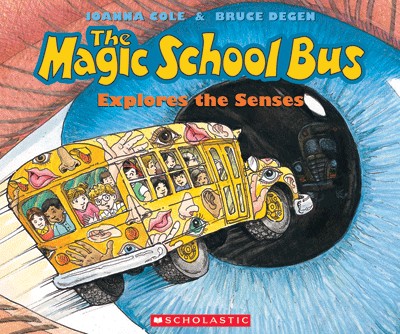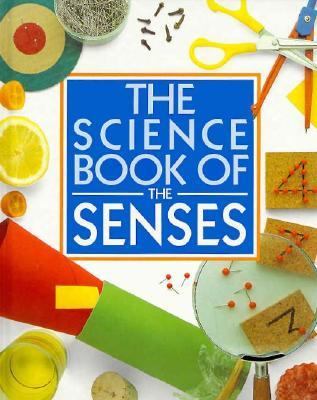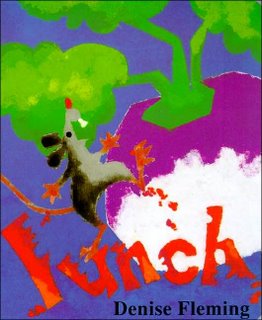
Join Matt while he explores the different uses and kinds of trucks in his bedroom. Peter SÃs has written and illustrated Trucks Trucks Trucks about the different motions that the primary character Matt uses to pick up his room using his toy trucks.
Trucks Trucks Trucks is a simple, yet creative book that shows the different actions of trucks through line drawings in white, yellow and blue accents. Page by page Matt plows, pushes, and rolls through his room while the trucks become gradually bigger until they are life sized and Matt becomes the driver. The book shows direction and motion well to through Matt's movements and efforts.
The layout of the book is very simple, with a question on the first page and then one word on each subsequent page. While it may not be the most difficult reading level book, it connects to the overall subject of physical science and demonstrates the vocabulary and spelling through large print and clear pictures. The beginning line opens the book into a fantasy science world for Matt, "Matt, will you pick up your trucks?".
Curriculum Connections
The reading level of Trucks Trucks Trucks is geared more towards kindergarten or pre-k, however, the book can be used for a physical science lessons in kindergarten and first grade involving straight, circular and back-and-forth motion. The book also shows through pictures and vocabulary that pushing or pulling an object can change the movement. Matt demonstrates the motion through words such as plowing, pushing, rolling, scooping (up and down), sweeping (circular motion), and lifting. In Virginia this relates to science SOL K.3a (attraction/nonattraction, push/pull, attract/repel, and metal/nonmetal) and 1.2a (objects may have straight, circular, and back-and-forth motion) and 1.2c (pushes or pulls can change the movement of an object).
Additional Resources
- A Turtle Book Lesson Plan offers coloring pictures, additional books, and has additional modes of transportation that move in ways that show straight and circular paths.
- Books of Common Thread Project includes a list of books that serve a similar purpose as Trucks Trucks Trucks and gives a short abstract and reflection on how the book can be used in a science or language arts lesson.
Book: Trucks Trucks Trucks
Author/Illustrator: Peter SÃs
Publisher: Greenwillow
Publication Date: 1999
Pages: 23 pages
Grades: K-1
ISBN: 0688162762







